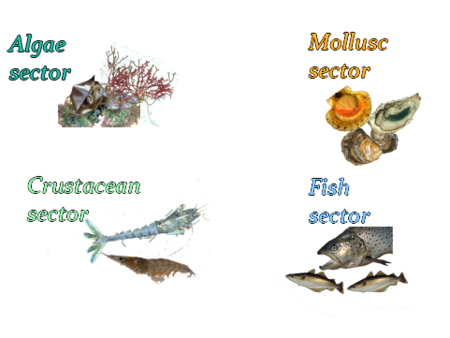Research Support
Great expectations are placed in the study of the physiology of red and brown macroalgae, which are different from the land vegetal species and are likely to exhibit specific and original metabolic pathways. As a remarkable example, it is worth noting the use of cellular extracts of algae sprayed over land vegetables to boost their resistance potential.
Ifremer - a world expert - is currently involved in the development of algoculture, a domain in which it has gained knowledge and developed techniques that it has passed on to the organizations that support the profession.
Microalgae form the basis of the oceanic primary production at the global scale. They produce the global organic carbon necessary for the functioning of the trophic networks. The global biomass is a result of the equilibrium between the growth of the populations – under the influence of three essential factors i.e. light, temperature and nutriments – and the disappearance of species due to grazing, cellular death, and sedimentation.
Microalgae cultivation is carried out as per two master plans:
- One based on the development of cultivation systems enabling microalgae to be produced as a function of the physiological and physical needs.
- One intended to meet the nutritional needs of animals that feed on them.
The main challenge for the research on microalgae is to obtain the adequacy between the production techniques and the nutritional demands of farmed animals, in order to achieve the economically viable support of aquaculture activities.

